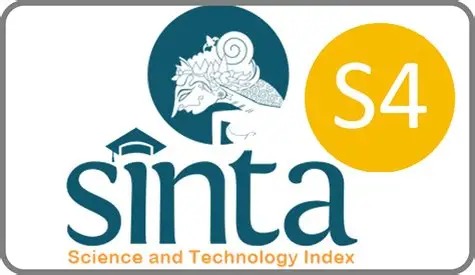CORRELATION BETWEEN TECHNOLOGICAL READINESS AND BUSINESS SOPHISTICATION IN GLOBAL COMPETITIVENESS
DOI:
https://doi.org/10.14421/jiehis.2241Keywords:
business sophistication, caconical correlation analysis, globab competitiveness, technological readinessAbstract
In today’s global economy, the competitiveness of a country has important role to bring the country into prosperity and a respectable position among others. That is why during the past decade, scholars, policy makers and even business leaders throughout the world put a very serious attentions to the issue. Since 1979, the World Economic Forum has published the Global Competitiveness Report which encompasses Global Competitiveness Index (GCI) in order to measure national competitiveness in different countries throughout the world. Using the two sets of variables of “Technological Readiness” and “Business Sophistication” as the two basic pillars of national competitiveness, this study is aimed at investigating the interaction between the two pillars in order to help countries which are in transition from stage II to stage III of development by providing meaningful information for their national competitiveness improvement. This study used descriptive-correlation methodology. According to the GCI 2010 report which covered a statistical population of 139 countries, the secondary analysis using Canonical Correlation Analysis was done. The result shows that there is a significant and positive relationship between the set of variables of “Technological Readiness” and “Business Sophistication”.
References
Baloglu, S.; Weaver. P.; & W. McCleary. K. (1998). Overlapping product-benefit segments in the lodging industry: a canonical correlation approach. International Journal of Contemporary Hospitality Management, 10; 159–166.
Bou-Llusar, J. C., Escrig-Tena, A. B., Roca-Puig, V. dan Beltra΄n-Marti΄n, I. (2005), "To what extent do enablers explain results in the EFQM excellence model", International Journal of Quality & Reliability Management, Vol. 22 No. 4, hal. 337-353.
De Vaus, D. (2002). Surveys in Social Research (5th ed.). London: Routledge.
Dutta, S.K. (2007). Enhancing competitiveness of India Inc.: Creating linkages between organizational and national competitiveness. International Journal of Social Economics, 34, 679-711.
Feldman, M. P. (1999), "The New Economics Of Innovation, Spillovers And Agglomeration: Areview Of Empirical Studies", Economics of Innovation and New Technology, Vol. 8 No. 1-2, hal. 5 -25.
Hair, J., Anderson, R. dan Tatham, R. A. (1998), Multivariate Data Analysis, New Jersey: Prentice Hall International.
Heap, J. (2007). Stormy productivity weather ahead? International Journal of Productivity and Performance Management , 56, 170-177.
Ivaniashvili-Orbeliani, G. (2009). Globalization and National Competitiveness of Georgia. Caucasian Review of International Affairs, 3, 70-85.
Jafarnejad, A., Ghasemi, R., Abdullahi, B. dan Esmailzadeh, A. (2013), “Relationship between Macroeconomic environment and Technological readiness: A Secondary Analysis of Countries Global Competitiveness”, European Journal of Social Sciences, Vol. 1 No. 2, hal. 1-13.
Jang, S. & Ryu, K. (2006). Cross-balance sheet interdependencies of restaurant firms: a canonical correlation analysis. Hospitality Management, 25, 159–166.
Karimi Hesenijeh, H. (2007). Globalization, competitiveness and development of non-oil exports: Investigating causal relationship between the Iranian economy. Quarterly economic review, 4(1), 117-134.
Khalil, T. (1999). Management of Technology: The key to competitiveness and wealth creation. McGraw-Hill Science/Engineering/Math; 1 edition.
Kovacic, A. (2007). Benchmarking the Slovenian competitiveness by system of indicators. Benchmarking: An International Journa , 14, 553-574.
LeClere, J. (2006), “Bankruptcy studies and ad hoc variable selection: a canonical correlation analysis”, Review of Accounting and Finance, Vol. 5 No. 4, hal. 410-422.
Lima, M. A. M., Resende, M. dan Hasenclever, L. (2004), "Skill enhancement efforts and firm performance in the Brazilian chemical industry: An exploratory canonical correlation analysis research note", International Journal of Production Economics, Vol. 87 No. 2, hal. 149-155.
Macinati, M. S. (2008), "The relationship between quality management systems and organizational performance in the Italian National Health Service", Health Policy, Vol. 85 No. 2, hal. 228-241.
Mai, L., & Ness Mitchell, R. (1999). Canonical correlation analysis of customer satisfaction and future purchase of mail-order specialty food. British Food Journal , 101, 857-870.
McFetridge, D.G. (1995). Competitiveness: concepts and measures. Industry Canada, Occasional Paper Number 5.
Mohaghar, A.; Safari, H.; Ghasemi, R.; Abdullahi, B., & Maleki, M.H. (2011). Canonical Correlation Analysis between Supply Chain Relationship Quality and Supply Chain Performance: A Case Study in the Iranian Automotive Industry. International Bulletin of Business Administration. 122-134.
Porter, M. E. (1990), The Competitive Advantage of Nations, New York: Free Press.
Porter, M. E. dan Schwab, K. (2008), The Global Competitiveness Report 2008-2009, Geneva: World Economic Forum.
Safari, H., & Asgharizadeh, E. (2008). Measuring competitive capacity of the National Petrochemical Company with Bayesian networks. Journal of Industrial Management, Tehran, Iran, 1 (1).
Schwab, K. (2009). The Global Competitiveness Report 2009–2010. Geneva: World Economic Forum.
Schwab, K. (2010), The Global Competitiveness Report 2010–2011. Geneva: World Economic Forum.
Tutuncu, O. dan Kucukusta, D. (2009), "Canonical correlation between job satisfaction and EFQM business excellence model", Quality & Quantity, Vol. 44 No. 6, hal. 1227-1238.
Vares, H., Parvandi, Y., Ghasemi, R. dan Abdullahi, B. (2011a), “Canonical Correlation Analysis between “Efficiency enhancers” and “Innovation and sophistication factors” in Global Competitiveness”, European Journal of Economics, Finance and Administrative Sciences, No. 31. Hal.123-132.
Vares, H. dan Parvandi, Y. (2011b), “Economic Take-off for Development: An Analysis of Underdeveloped Countries' Basic Requirements for Competitiveness”, European Journal of Social Sciences, Vol. 22 No. 1, hal. 97-105.
Downloads
Published
How to Cite
Issue
Section
License
Copyright (c) 2021 Journal of Industrial Engineering and Halal Industries (JIEHIS)

This work is licensed under a Creative Commons Attribution-ShareAlike 4.0 International License.
(c) The Author(s). This article is distributed under a Creative Commons Attribution-ShareAlike 4.0 International License.






